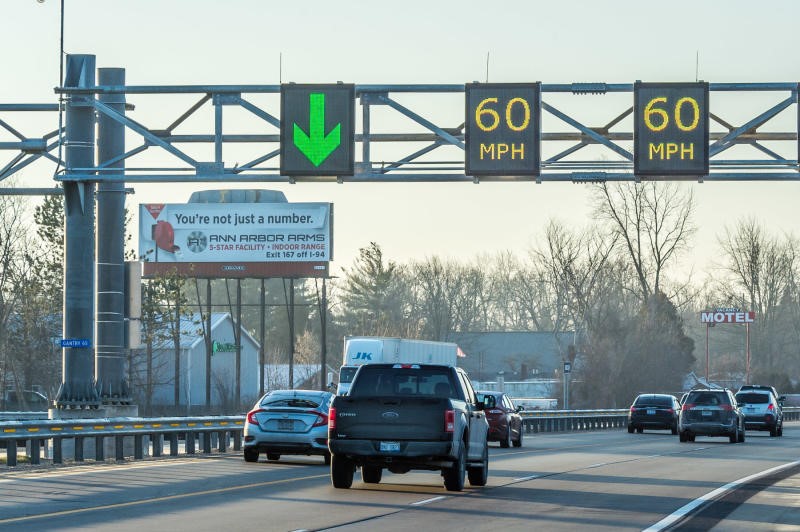
MDOT: Flexing Our Innovation Muscle
Transportation departments across the country are stretching scarce resources to make tangible gains in safety and efficiency. Michigan is no different and the Michigan Department of Transportation’s (MDOT) US-23 Flex Route project is a prime example.
Opened in 2017, the US-23 Flex Route is 9 miles long north of Ann Arbor. Recurring directional congestion during morning and afternoon peak travel times led to long incident response times and impacts on local economies. This project is a long-term innovative solution to these challenges by using dynamic technology and utilizing the existing infrastructure.
After years of study to determine the most cost-efficient way to manage this heavily used corridor, the Flex Route alternative met the purpose and need project goals better than any other and addressed incident management and safety at a higher level. In addition to shortening commute times, the use of the median shoulder to manage traffic during incidents more efficiently and reduced secondary crashes by decreasing incident backup.
The project’s success is evident in the numbers. The US-23 Flex Route improved system reliability during peak hours by 56 percent on southbound lanes in the morning and 27 percent on northbound lanes in the afternoon. Not only was commuting travel more efficient, but safety was also improved by a reduction in primary and secondary crashes by more than 50 percent in the first month of operation.
Read additional stories from this state:


